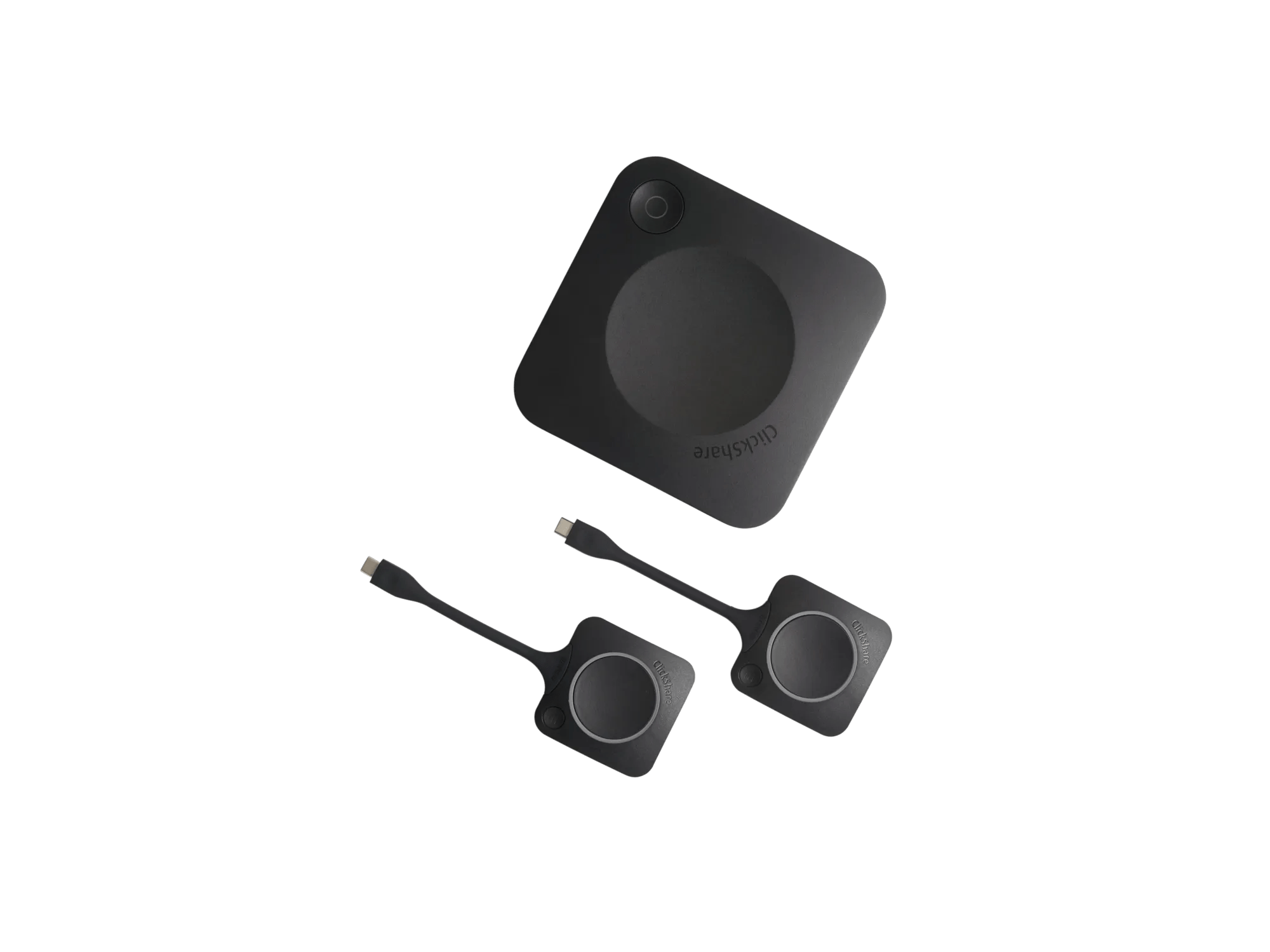Get ready for the hybrid workplace with an open-rooms approach to meeting rooms
Hybrid meetings · ClickShare · 3 min read
The new hybrid workplace forces us to rethink and re-invent our meeting habits and the use of different types of rooms.Will we still use a standard meeting room for spontaneous, ad hoc hybrid collaboration? Will we be able to use our own devices in any room? Can we use our preferred VC solution in combination with the existing meeting room tech?
Slowly it becomes clear that enterprises need to embrace an open room approach to meeting rooms. You can only gain from introducing room flexibility and putting the user at the heart of collaboration...
Today’s hybrid workplace
The crisis of the 2020 pandemic has caused us to react and re-evaluate many aspects of our day-to-day life. Some, of course, are temporary measures. Many others are seen as an escalation of existing trends more than a mere reaction, and thus are perceived as a “new normal.” One “new normal” that is clearly here to stay is the hybrid workplace - one that’s evolved to a balanced mix of on-premise and remote workers, from a pre-COVID office-centric structure with 90%+ of meeting goers being on premises in the meeting room.
Read more?
Download your copy of the whitepaper on a video-first approach in the hybrid workplace
How did this happen? According to our recent research on hybrid working, 74% of the workforce wants to continue working from home, at least 2 days a week even after the pandemic is over. Looking further down the road, Gartner reports that by 2024, in-person meetings will drop from 60% of enterprise meetings to 25%, driven by remote work and changing workforce demographics.
The changes taking place are influencing just about every aspect of the traditional workday, from communications and workflow, right down to water cooler chats.
High time to reconsider our time-honored tradition of team meetings. It’s here where goals are outlined, questions are answered, new ideas are formed, and solutions are discussed. And it’s not just the kickoff meetings or the presentations that require attention, but the ad-hoc meetings in between that require attendance from individuals that are further away than the call of one’s voice.
These types of meetings are important. They’re productive. They’re at the core of collaboration and are an essential part of today’s hybrid workplace.
In an effort to better connect with teammates and to bring some normalcy to working from home, many remote workers have adopted a video-first approach to conference calls.
They can easily run them from their laptop and the wide-spread availability of video conferencing software makes it comfortable for so many to use this approach for work meetings, schooling and even socialization.
As we gradually return to the office, with some people in the office and some working remotely, video conferencing has emerged as the natural successor to in person face-to-face meetings and collaboration. And, in this ‘new normal’ most, if not all, meeting rooms will need to be video-enabled in order to continue to be productive, they need to be simple, seamless, and secure.
An Open Rooms Approach to Meeting Rooms
In the past few years, we’ve all become accustomed to the acronym BYOD (Bring Your Own Device) in the workplace. It came about when team members preferred working and collaboration with the devices they were most comfortable with – be it their own tablet, mobile device, or laptop. This has led to the industry coining a new acronym – BYOM (Bring Your Own Meeting).
The same way that everybody has their own favorite device, in recent times, everybody has quickly chosen their own favorite online conferencing solution (e.g. Microsoft Teams, Webex, Zoom and many more). This ranges from team members to clients, to remote workers, and new hires. The BYOM concept centers on the idea of being able to host a conference not only with your own device, but with your preferred conferencing solution as well.
What is needed to fully maximize the BYOM concept is an umbrella solution that instantly connects to the provided equipment in a conference, meeting or huddle room, integrates openly with any conferencing platform and allows the host to easily switch from a two-person meeting to a 10-person meeting, without everyone huddling around a laptop. What we’re talking about is a paradigm shift in the traditional meeting room concept.
Enter “Open Rooms.” These are meeting rooms that are equipped with video conferencing technology that team members can easily and seamlessly connect to. In essence, every meeting room needs to work as a video conference room. It allows team members to actively jump into meetings and conferences with the devices, solutions, and video meeting software they are familiar with.
All meetings rooms must be “open” to all users, for all types of meetings and the experience needs to be the same throughout the entire enterprise. The good news is, upgrading today is much more cost effective than prior room-based systems, resulting in affordable scalability.
Flexible wireless conferencing solutions like ClickShare Conference enable this open rooms-approach. They are vendor-agnostic, scalable (because they work with your existing AV solutions) and most of all intuitive to use. They share the apps from your laptop wirelessly to the room display, connect them seamlessly to the camera, mic and speakers in the meeting room for better hybrid meetings for both in-room and remote participants.
Tailored to the user’s device, workflow and preferences, ClickShare Conference lifts video conferencing to the most engaging level of collaboration there is today.




